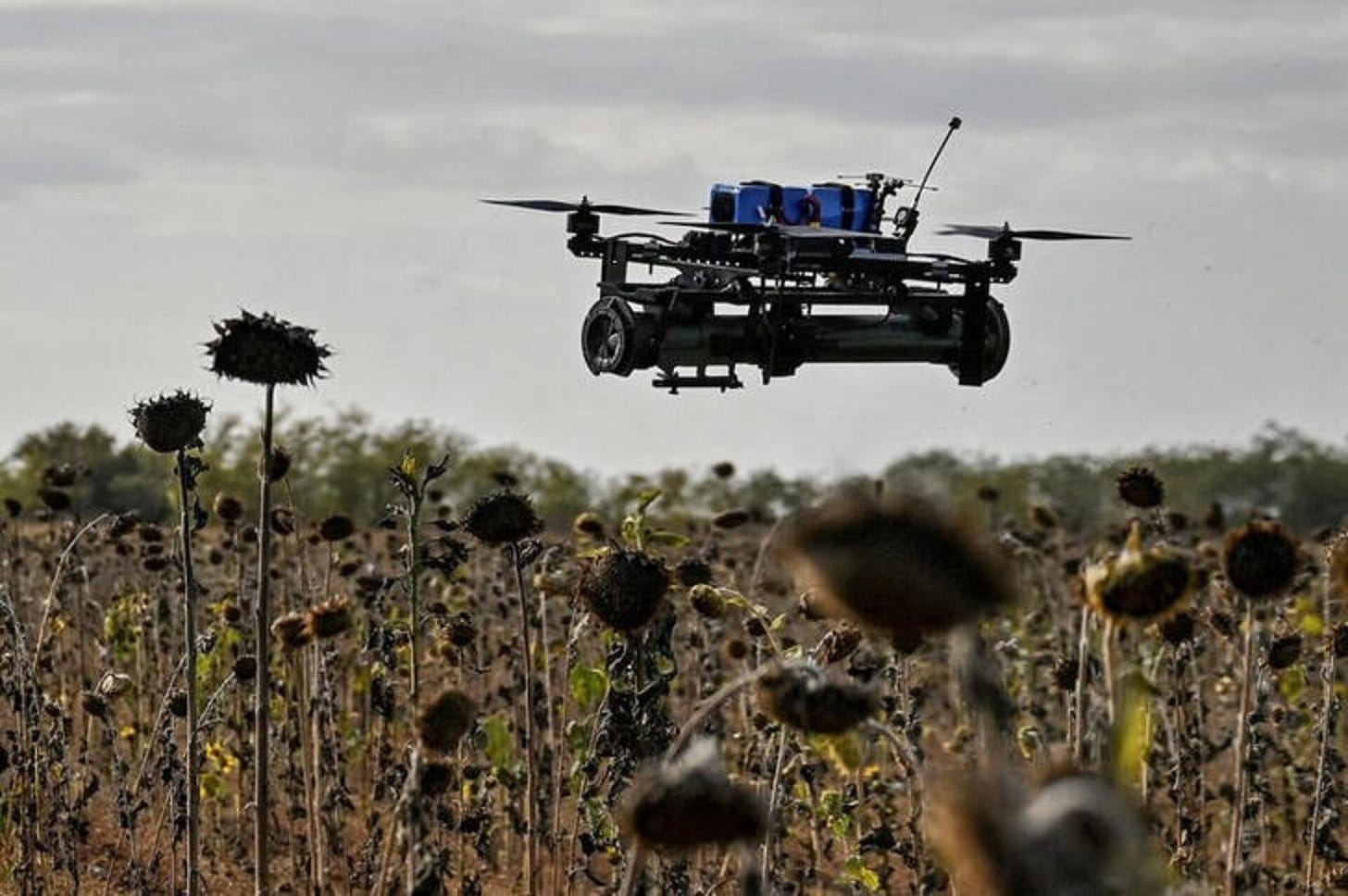Technology and Warfare in Ukraine
Rewriting the Rules for War in the 21st Century
If you want to see how technology is changing the nature of warfare, look at Ukraine. This conflict is the first large-scale war where drones are not a sideshow but the centerpiece.

Ukrainian drones have struck at least 16 of Russia’s 38 oil refineries since August, knocking out over a million barrels per day of refining capacity and driving up Russian fuel prices. One recent raid flew more than 1,400 kilometers to hit a Gazprom refining facility. This is economic warfare at industrial scale, hitting the backbone of Russia’s war machine.
Russia, meanwhile, has launched record waves of drones and missiles against Ukrainian cities. The duel has locked both sides into a struggle where cheap machines redefine offense and defense. A drone that costs a few hundred dollars can destroy equipment worth millions. Military movements that once could be masked by distance or terrain are now spotted and stopped before they’ve barely begun.
This balance is familiar. In World War I, machine guns, gas, and artillery tipped the scale toward defense and trench warfare. World War II tilted it back toward offense with tanks and aircraft. Nuclear weapons then made offense too dangerous between major powers, pushing the Cold War into proxy conflicts.
Ukraine is something of a hybrid: a state-on-state war where the advantage again favors defense. Anti-tank weapons, real-time surveillance systems, and missile defenses make large maneuvers nearly impossible. Armies dig in, protect logistics, and grind away. Drones are the reason.
Science fiction has often imagined such tipping points. Frank Herbert’s Dune described energy shields that made conventional weapons useless, forcing combat back into hand-to-hand fighting. The logic is the same: when one technology becomes overwhelming, militaries scramble to invent resets. In Ukraine, that may mean electronic warfare, counter-drone swarms, or new ways to blunt autonomy. Until then, the battlefield belongs to defense.
Autonomy is already here in limited form. Russia’s Shahed drones are pre-programmed to crash into infrastructure. Ukraine has developed drones that can continue to navigate and strike after losing signal. The Institute for the Study of War notes that while we are not yet in a full “battlefield AI revolution,” both sides are actively experimenting with AI-driven targeting and navigation. Ukrainian officials even claim some drones that hit Russian aircraft used AI to identify and attack after losing contact.
The appeal is obvious: faster reaction, cheaper operations, lower risk of casualties. The analogy with self-driving cars is apt. Autonomy works in controlled conditions, but human oversight remains necessary in complex environments.
The danger lies in the gap between how algorithms and humans make decisions. What counts as enough information to justify a strike? Who is accountable if an autonomous drone hits civilians: the engineer, the officer, or the code? The laws of war assume the judgment of human beings, not statistical models.
For now, drones are reshaping warfare in real time. Offensives stall, defenses harden, and attrition defines the battlefield. But balances like this never last forever. Technology always finds new ways to shift the scale.
The United States is watching closely. Washington recently struck a deal to co-develop drones with Ukraine, giving the Pentagon access to battlefield innovations that are outpacing U.S. procurement cycles. Ukraine’s drone program is not just a survival tool—it is a laboratory for the future of war.
The question is whether the U.S. and its allies can adapt as quickly as Kyiv has. Because for now, drones, guided by humans today and increasingly by AI tomorrow, are not just changing how wars are fought. They are rewriting the rules.


